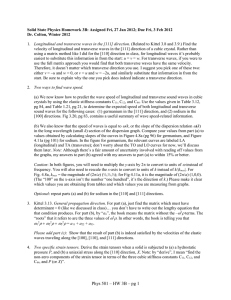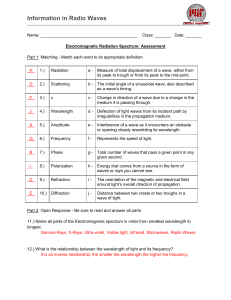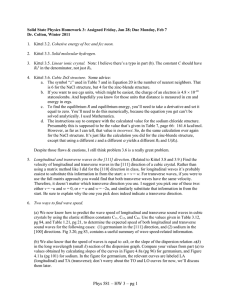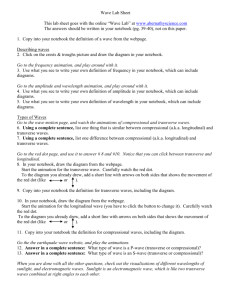100922 Waves Testing Expt
advertisement
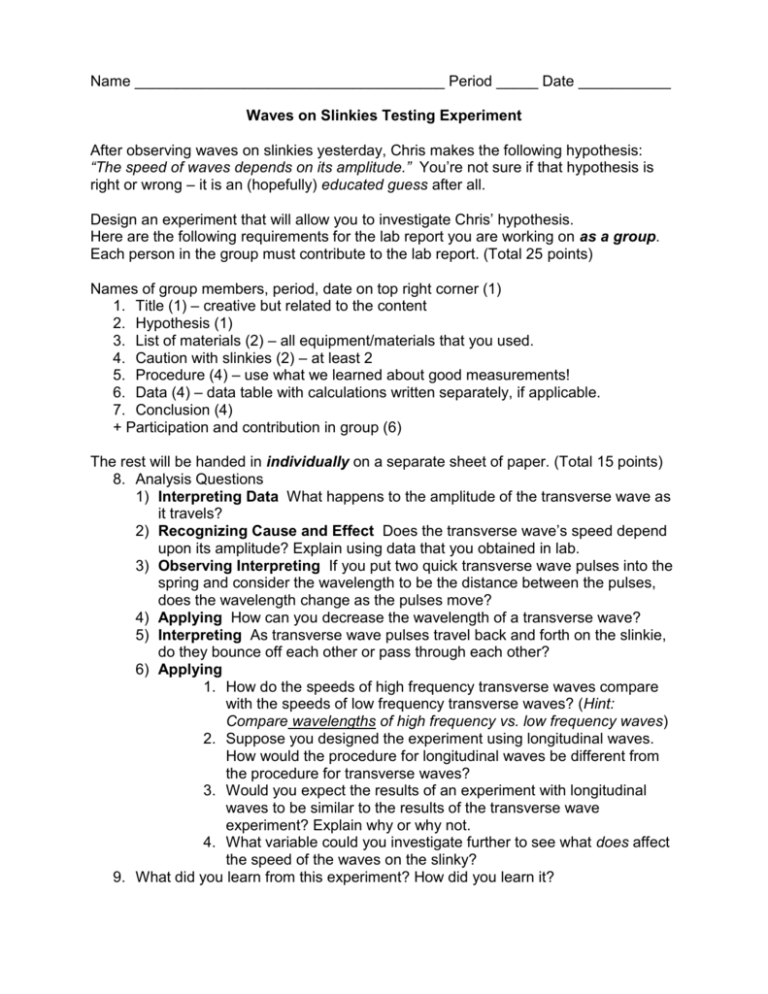
Name _____________________________________ Period _____ Date ___________ Waves on Slinkies Testing Experiment After observing waves on slinkies yesterday, Chris makes the following hypothesis: “The speed of waves depends on its amplitude.” You’re not sure if that hypothesis is right or wrong – it is an (hopefully) educated guess after all. Design an experiment that will allow you to investigate Chris’ hypothesis. Here are the following requirements for the lab report you are working on as a group. Each person in the group must contribute to the lab report. (Total 25 points) Names of group members, period, date on top right corner (1) 1. Title (1) – creative but related to the content 2. Hypothesis (1) 3. List of materials (2) – all equipment/materials that you used. 4. Caution with slinkies (2) – at least 2 5. Procedure (4) – use what we learned about good measurements! 6. Data (4) – data table with calculations written separately, if applicable. 7. Conclusion (4) + Participation and contribution in group (6) The rest will be handed in individually on a separate sheet of paper. (Total 15 points) 8. Analysis Questions 1) Interpreting Data What happens to the amplitude of the transverse wave as it travels? 2) Recognizing Cause and Effect Does the transverse wave’s speed depend upon its amplitude? Explain using data that you obtained in lab. 3) Observing Interpreting If you put two quick transverse wave pulses into the spring and consider the wavelength to be the distance between the pulses, does the wavelength change as the pulses move? 4) Applying How can you decrease the wavelength of a transverse wave? 5) Interpreting As transverse wave pulses travel back and forth on the slinkie, do they bounce off each other or pass through each other? 6) Applying 1. How do the speeds of high frequency transverse waves compare with the speeds of low frequency transverse waves? (Hint: Compare wavelengths of high frequency vs. low frequency waves) 2. Suppose you designed the experiment using longitudinal waves. How would the procedure for longitudinal waves be different from the procedure for transverse waves? 3. Would you expect the results of an experiment with longitudinal waves to be similar to the results of the transverse wave experiment? Explain why or why not. 4. What variable could you investigate further to see what does affect the speed of the waves on the slinky? 9. What did you learn from this experiment? How did you learn it?






